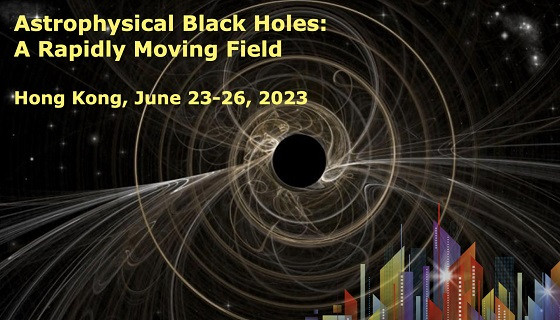Session:- Relativistic jets and particle acceleration.1
Theoretical and observational studies of astrophysical black holes have been in rapid development in recent decades. This conference will present major breakthroughs and key remaining questions concerning our fundamental understanding of astrophysical black holes, such as the formation and collimation of relativistic jets, the accretion and growth of black holes, the measurement of black hole spin, the merger of black holes, the first images of black hole shadow, the particle acceleration mechanisms and transient phenomena around black holes, and the feedback from massive black holes to galaxies.
◎Looking for Physics in the Weather: 30 Years of Gamma-Ray Blazar Observations
The launch of the Compton Gamma-Ray Observatory in 1991 revealed that the powerful relativistic outflows (“jets”) produced by accreting supermassive black holes are in fact some of the most prodigious emitters of gamma-rays in the Universe. Even accounting for likely relativistic beaming and boosting effects, this gamma-ray emission can represent a significant of the black hole’s accretion power. Exactly how a black hole manages this is still not well understood, but it is clear that the underlying physical conditions and processes are among the most extreme we know of. Because this gamma-ray emission is sporadic and highly variable, it has been termed by some as “weather” that obscures more fundamental physics. There is some truth to this, but the speaker will argue that we have nonetheless made significant progress, both observational and theoretical, since the first gamma-ray observations of blazars. He will give an overview of the outstanding issues in the study of high-energy emission from blazars and of our future prospects for tackling them.
時間:2023.06.23(五) 09:30~10:05
講者:Prof. Paolo Coppi (Yale University)
↓
↓
◎The Observation of the Brightest GRB 221009A by LHAASO
LHAASO observed GRB221009A, as the brightest GRB, with it nearly in the middle of the FoV. The onset of the afterglow in TeV band was first time observed by measuring the flux from the GRB since T0 set by a precursor. This enables
1) Determining the start time of the afterglow T* ∼226 s after T0;
2) Setting the most strict limit on the prompt emission in TeV band ∼10⁻⁵;
3) Estimating the initial bulk Lorentz factor Γ₀ of the ejecta ∼440;
4) Measuring the jet break shortly after the onset indicating a narrow jet structure observed ever;
5) Furher investigations for more GRB features, including the most energetic photons.
時間:2023.06.23(五) 10:05~10:40
講者:Prof. Zhen Cao
↓
↓
地點:香港大學 百週年校園 CPD 3.04 Centennial Campus
語言:英語
是會議作坊,參加者必須登記,2023.04.30 截止
【此屬轉載訊息,以主事單位發佈為準】
此活動由香港大學物理系主辦。
https://astrobh.physics.hku.hk/event/3/timetable/#all.detailed


